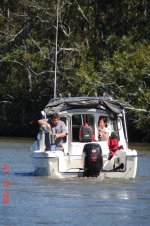I saw a small blurb in a magazine about these little outboards, and checked out the site: Torqeedo.com
Their small units are 2-6 horsepower. The smallest two have the Lithium battery on top of the outboard leg and only weigh under 25 pounds, battery and all.
Does anybody have any experience with these rechargeable outboards? I am thinking it might make a great dingy engine, or emergency 'get home' engine.
Do you think the 2 hp unit would handle a 7-8 foot dingy OK?
John
Their small units are 2-6 horsepower. The smallest two have the Lithium battery on top of the outboard leg and only weigh under 25 pounds, battery and all.
Does anybody have any experience with these rechargeable outboards? I am thinking it might make a great dingy engine, or emergency 'get home' engine.
Do you think the 2 hp unit would handle a 7-8 foot dingy OK?
John

